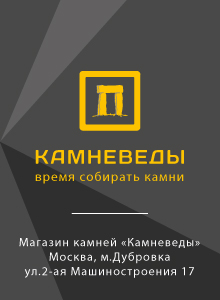Комиссия IMA по новым минералам и названиям минералов: нормы и рекомендации по номенклатуре минералов, 1998 Выбор названия для нового минерала
Choice of a new mineral nameThe responsibility for the choice of a name for a new mineral rests primarily with the author(s) of the original description, although the name must ultimately be approved by the CNMMN. A mineral is commonly named for the geographical locality of its occurrence, for the discoverer of the mineral (although not if he or she is the author), for a person prominent in the field of mineralogy, or for a particular property of the mineral.
The naming of minerals after commercial organizations or groups that have made no specific, worthwhile contributions to mineralogy is to be discouraged, to prevent inappropriate commercialization of the nomenclature.
If the mineral is to be named after a geographical occurrence, care must be taken to ensure that the spelling conforms to that in use at the locality; the spelling should not be taken from translations.
If the mineral is to be named after a living person, that person’s permission must be obtained by the author, and this should be done prior to the submission of the proposal to the CNMMN. When deciding to name a mineral after a person, it is well to recall J. D. Dana’s (1854) precept: “It should be remembered that the use of names of persons eminent in other sciences, or of such as are ignorant of all science, is wholly at variance with good usage and propriety; moreover, an attempted flattery of the politically distinguished is degrading to science, and cannot be too strongly discountenanced”. If the mineral is named after a person with a space or a capital letter in the name, the name should be modified to eliminate them, e.g., mcnearite, not mcNearite; joesmithite, not joe smithite. Otherwise, the original spelling of the person’s name should be retained.
Although the CNMMN does not have a fixed policy on the use of compounded personal names, some members feel that they should be discouraged, particularly where they become cumbersome or cacophonous, or where they unnecessarily distort the true names of the individual who is supposedly being honored.
Mineral names proposed in languages that use other than the Latin alphabet should be transliterated into the Latin alphabet by the author of the name according to the prevalent system operative in the country of origin. Such transliterated names should be reported, in national journals, for example, when the name of the mineral is written according to other alphabets or phonetic rules. Diacritical marks should be retained wherever possible, but it is recognized that not all printing establishments have the necessary facilities for printing all types of diacritical marks; in such cases, diacritical marks may be omitted.
Re-use of a discredited or obsolete name for a new or redefined mineral is to be discouraged, except when the new mineral is a component of a mixture originally described as a single mineral; in such a case, the original name may be transferred to the new phase. Re-use of a discredited name may also be permitted if there is a good reason why the discredited name is particularly appropriate for the mineral in question, and the discredited or obsolete name has not appeared in the active literature (except for the report of its discreditation) for fifty years. A proposal to re-use an obsolete name must be accompanied or preceded by a proposal to discredit the obsolete name. If the CNMMN does not approve a proposal to re-use a discredited name, the author of the proposal has no priority for the use of the discredited name, although he is free to propose the name again at a future time.
The re-use of an obsolete or discredited name is not permitted if the name has been used to a significant extent outside the field of mineralogy (e.g., in petrography, metallurgy, paleontology, etc.), or to indicate two or more minerals.
If an artificial substance has been given a name, and a mineral corresponding to that substance is subsequently discovered, the name given to the artificial substance does not necessarily have to be applied to the mineral.
The name must be sufficiently different from existing ones to prevent confusion, both in the author’s language and in others. Existing mineral nomenclature already displays a number of examples of unfortunate names that are easily confused; names such as celadonite and caledonite, or mallardite and malladrite can easily be misspelled; names such as rhodesite, rhodizite and rhodusite are euphonically very similar. Introduction of new names that can create similar problems must be avoided.
If the new mineral is clearly and simply related to an existing one, it is very desirable that this relationship be indicated in the new name, e.g., clinoenstatite for the monoclinic dimorph of enstatite, or magnesiocopiapite for the Mg analogue of copiapite. Such a name should consist of one word only (e.g., magnesiocopiapite, not magnesium copiapite).
Efforts should be made to choose a simple name rather than an excessively complicated one that may be difficult to read or pronounce. The use of excessively long names should be avoided, as these may cause difficulties in pronunciation, tabulations, and computer databases.
источник
|
info@kristallov.net Правила копирования и цитирования материалов с сайта Кристаллов.Net |
| Карта сайта |
|
© Кристаллов.net | Kristallov.net Copyright 2010-2017 Систематика и классификация минералов, горных пород, метеоритов, окаменелостей |

